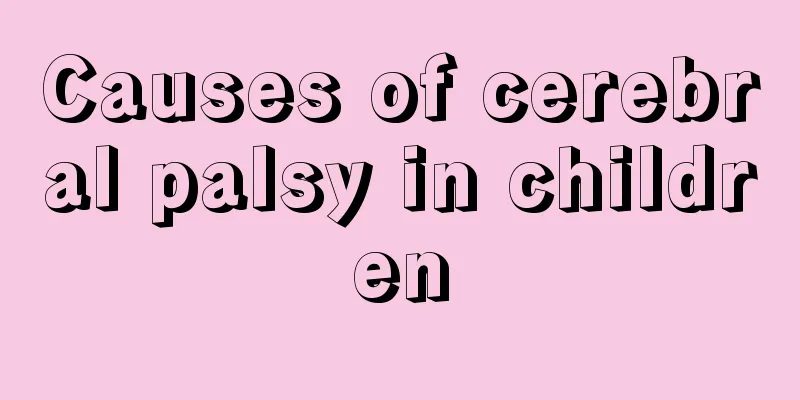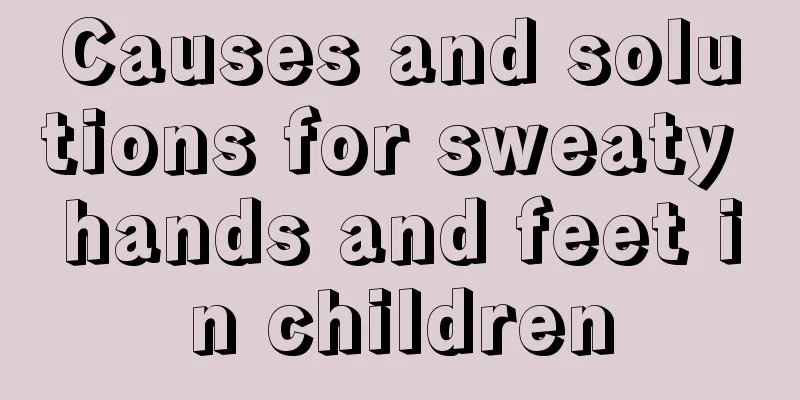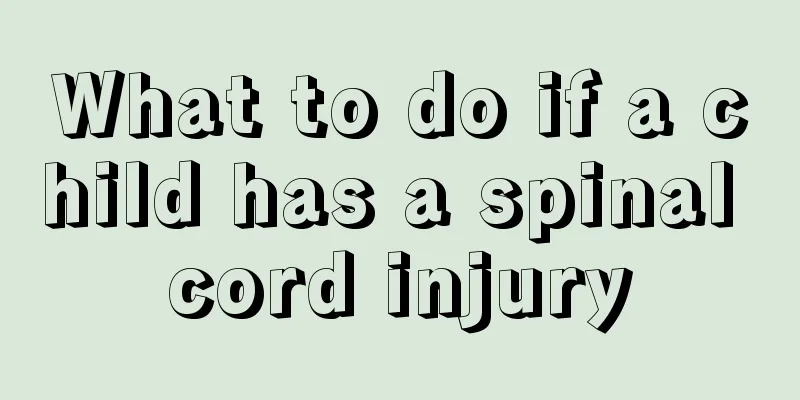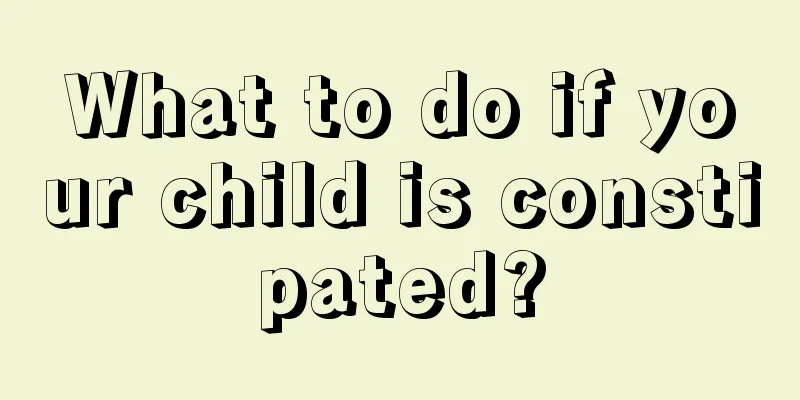Causes of cerebral palsy in children

|
During the baby's growth process, parents will understand and observe the baby's every move, and will be very nervous if they find something wrong in the slightest, especially if the baby's development is slower than other children. Because slow development of children can lead to cerebral palsy, it is natural for parents to worry when this happens. The following are some information about the causes and treatments of mild cerebral palsy in children. Prenatal factors (1) Abnormal brain development during the embryonic period, such as microcephaly, congenital hydrocephalus, megalencephaly, or anencephaly. (2) Trauma, pregnancy toxemia, diabetes and radiation exposure to the mother during pregnancy can affect the fetal brain development and cause permanent brain damage. (3) Rubella or toxoplasmosis in the mother during early pregnancy affects the development of the fetus's central nervous system and causes disease. (4) Premature infants and small-for-size infants are more likely to develop the disease at a younger age. It is related to the incomplete development of the nervous system in premature infants, and they are prone to bleeding and hypoxia. (5) Post-term placental degeneration and necrosis can cause hypoxemia and fetal hypoxia. Intrapartum causes (1) Cerebral hypoxia: Prolonged delivery or the use of anesthetics and sedatives before delivery can inhibit fetal breathing and cause fetal hypoxia. In addition, umbilical cord around the neck, early placental abruption, and placental previa can all cause fetal brain hypoxia. (2) Cerebral hemorrhage Birth trauma, premature delivery, difficult labor and hemorrhagic diseases can all cause intracranial hemorrhage. (3) Postpartum causes include kernicterus caused by neonatal hyperbilirubinemia, meningitis, encephalitis, or toxic encephalopathy caused by severe systemic infection, head trauma, carbon monoxide poisoning, etc., which can also be diagnosed as sequelae of a certain disease. Spinal nerve balance reshaping Simple spasticity, muscle tension above level 3; no obvious fixed contracture deformity or only mild deformity, cerebral palsy detection, conservative treatment, surgical treatment, postoperative rehabilitation; certain motor ability of spine and limbs before operation; normal or near normal intelligence to facilitate postoperative rehabilitation training; severe spasticity and stiffness that affect daily life, nursing and rehabilitation training. Minimally invasive limb deformity correction Simple spasticity, minimally invasive combined muscle balance surgery; patients with cerebral palsy with deformities such as valgus and valgus deformity of hands and feet, scissor-cross deformity, equinus, calf foot, claw foot, inward movement of forefoot, bilateral hip adduction deformity, flexion of hands, feet and knees, etc. Selective posterior rhizotomy Simple spasticity, muscle tension above level 3; no obvious fixed contracture deformity or only mild deformity, cerebral palsy detection, conservative treatment, surgical treatment, postoperative rehabilitation; certain motor ability of spine and limbs before operation; normal or near normal intelligence to facilitate postoperative rehabilitation training; severe spasticity and stiffness that affect daily life, nursing and rehabilitation training. Selective posterior rhizotomy Simple spasticity, muscle tension above level 3; no obvious fixed contracture deformity or only mild deformity, cerebral palsy detection, conservative treatment, surgical treatment, postoperative rehabilitation; certain motor ability of spine and limbs before operation; normal or near normal intelligence to facilitate postoperative rehabilitation training; severe spasticity and stiffness that affect daily life, nursing and rehabilitation training. Neuro-factor repair therapy Patients with cerebral palsy with various symptoms such as simple spasticity, spastic hemiplegia, spastic diplegia, spastic quadriplegia, involuntary movement type, ataxia type, etc. The article introduces the causes and related treatments of cerebral palsy in children. There are many causes of cerebral palsy in children, including prenatal factors and postnatal factors. I hope mothers can remember the causes of mild cerebral palsy in children introduced in the article and prevent these causes from occurring in their lives. |
<<: Is cerebellar atrophy hereditary and how to diagnose it yourself
>>: Correction of rib valgus in children
Recommend
What causes pain in the back of the child's head?
Raising a child is a very troublesome and careful...
What is the cause of peeling skin on the baby?
We all know that every baby is the hope of the fa...
The child has a sound in the trachea when breathing
If a child makes a sound in the trachea when brea...
How many teeth does a two and a half year old baby have?
A two and a half year old baby has about 20 teeth...
Will babies kick their legs when they have flatulence?
Babies are relatively young and their stomachs ar...
What to do if your newborn has a lump on his chest
When a newborn shows any abnormalities, a physica...
What is enuresis
Enuresis refers to the unconscious urination beha...
What is the cause of vomiting and diarrhea in young children?
It is common for young children to get sick at a ...
Will babies be zinc deficient?
We often find that babies have poor appetite, sle...
Treatment and care of baby ADHD
ADHD is a very common disease. Many parents and t...
What to check before hernia surgery
Before hernia surgery, the main thing to do is to...
How high is the pillow for a six-month-old baby?
6-month-old babies are in an important and critic...
Is bedwetting a disease in a nine-year-old child?
It is normal for infants and young children to we...
What should I do if my child coughs without phlegm?
We all know that an old person in the family is l...
What is nodular goiter in children?
Every child is the top priority of our family, an...









